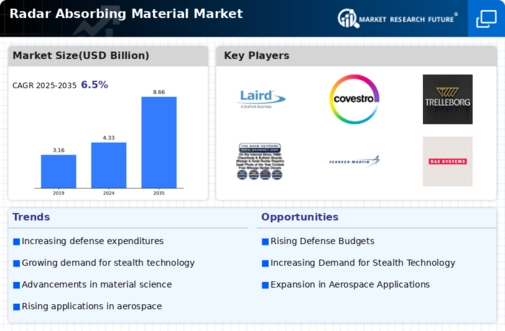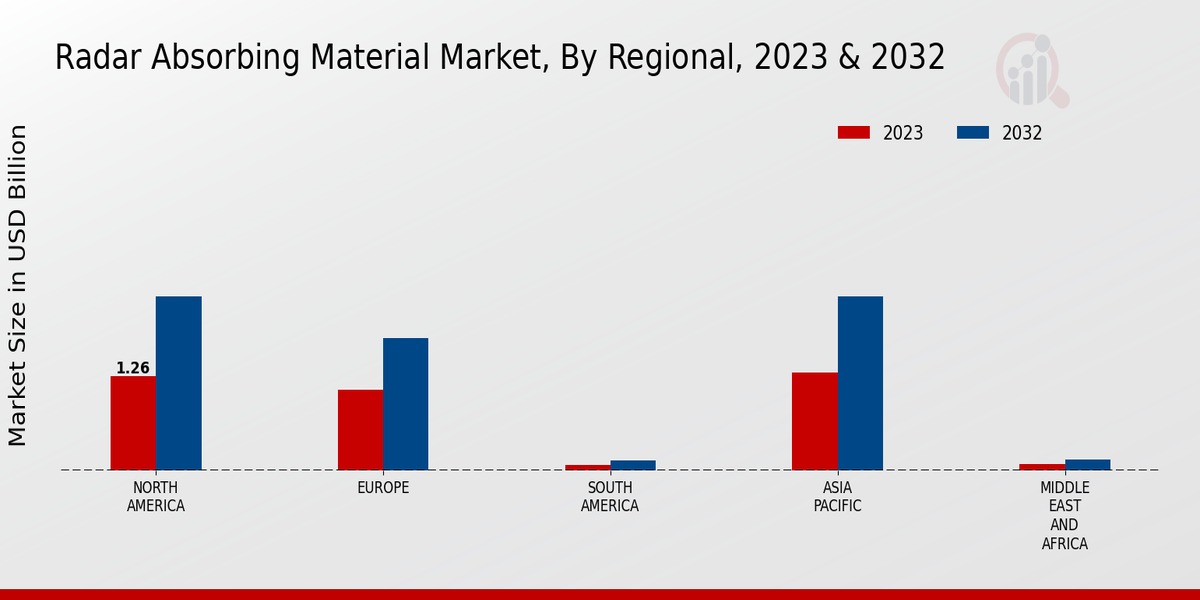Major players in the radar absorbing material market industry are continuously engaging in research and development activities to enhance their product offerings and gain a competitive edge. This has led to the introduction of advanced Radar Absorbing Materials (RAMs) with improved absorption capabilities, wider frequency ranges, and enhanced durability. Leading Radar Absorbing Material Market players are also focusing on strategic partnerships and acquisitions to expand their market presence and strengthen their product portfolio. The Radar Absorbing Material Market industry is characterized by intense competition, with both established and emerging players vying for market share.
The competitive landscape is expected to remain dynamic in the coming years as new technologies and applications emerge.A leading company in the Radar Absorbing Material Market, 3M, has a strong track record of innovation and offers a comprehensive range of RAM products.
The company's RAMs are used in various applications, including aerospace, defense, and telecommunications. 3M's commitment to research and development has enabled it to develop advanced RAMs with exceptional performance characteristics. The company's global presence and established distribution network provide it with a competitive advantage in reaching customers worldwide. 3M is well-positioned to maintain its leadership position in the Radar Absorbing Material Market through ongoing investment in innovation and expansion.
Another major player in the Radar Absorbing Material Market is Laird Performance Materials. The company offers a wide range of RAM solutions, including absorbers, shields, and composites. Laird's RAMs are known for their high performance, reliability, and durability. The company has a strong focus on customer service and provides tailored solutions to meet specific application requirements. Laird's global manufacturing and distribution capabilities enable it to serve customers efficiently and effectively. Through strategic acquisitions and partnerships, Laird has expanded its product portfolio and strengthened its market position.
The company is committed to ongoing innovation and strives to provide cutting-edge RAM solutions to its customers.





















Leave a Comment